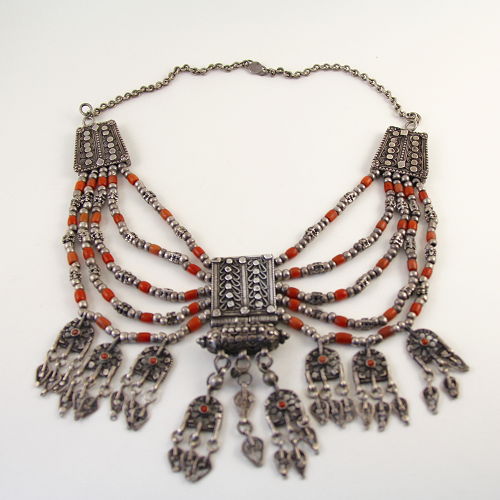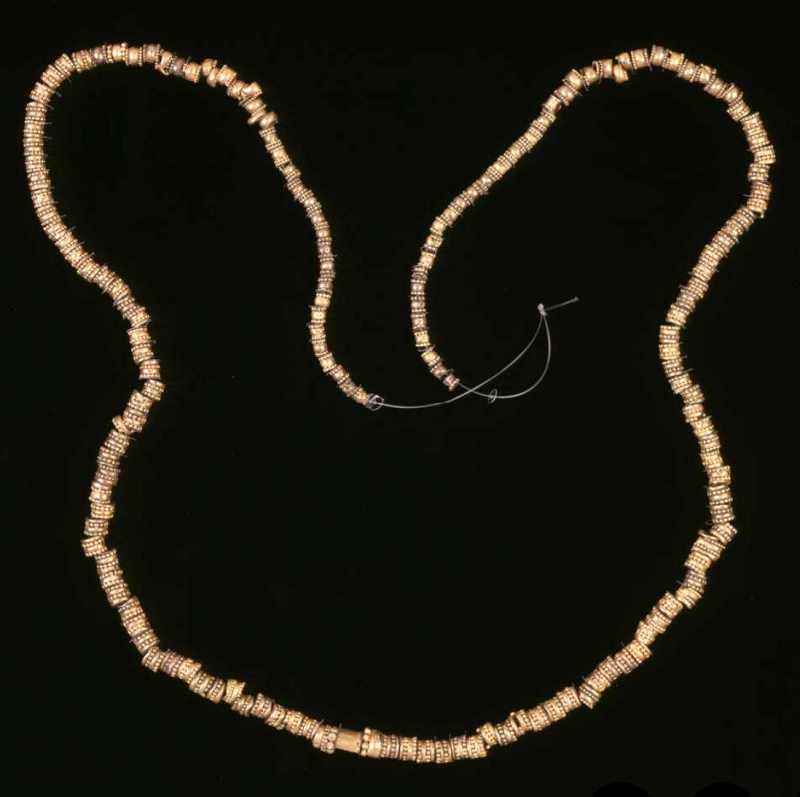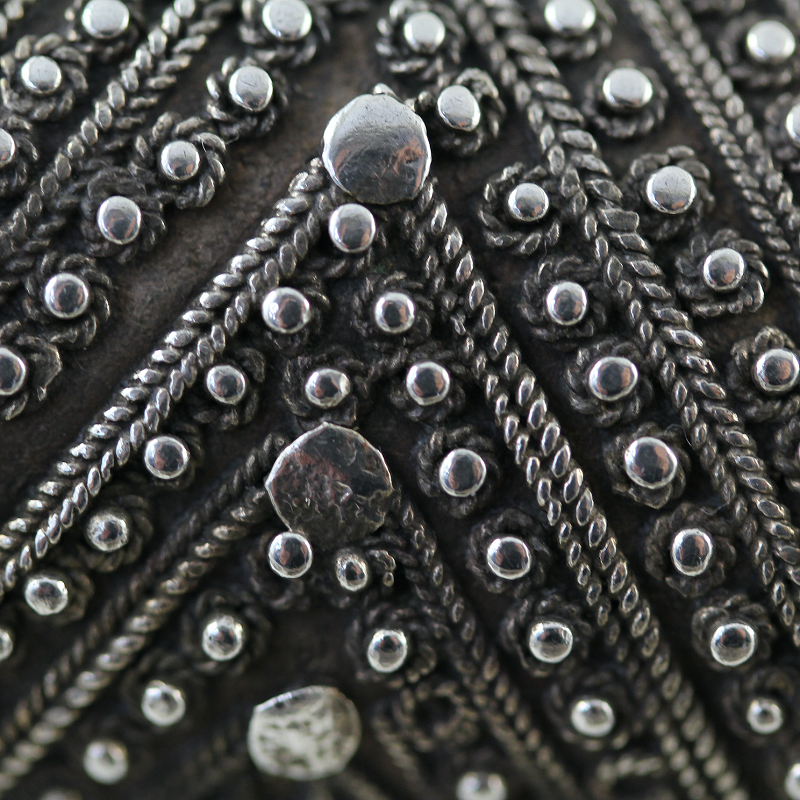In the blog series on jewellery, we will focus on the jewellery traditions of various countries in North Africa and South-West Asia. These jewellery traditions go further back in history than the geographical borders we know today, and of course, one country may be home to several cultural traditions. Both the historical context and the cultural heritage of a variety of peoples are visible in the jewellery worn, and we hope to introduce this wider scope of adornment and dress to you. In this post, we will look at the long history of jewellery in Yemen.
Beads and trade
Yemen is located on the southwestern point of the Arab Peninsula. Like all countries on the Peninsula, the location on an intersection of land and sea routes made for a long and rich history of trade and commerce. For Yemen especially, the vicinity of Africa on the other side of the Red Sea has been of particular importance. One of the main trade routes ran from Marib to Wadi Beihan. From Wadi Beihan onwards, incense and spices were transported to the north, where they ended up in Egypt, Mesopotamia and Palestine. Halfway, the route passed Wadi al-Jubah, where many beads were excavated in Hajar al-Rayhani. Here, beads of limestone and calcite, but also of carnelian and garnet were found. Hajar al-Rayhani appears to have been a place where beads were made for well over a millennium between the 12th and the first century BCE. Interestingly, research has shown that diamonds were used in bead manufacture, either as an abrasive or as a tool. This in turn points to trade with either Africa or India, as both are sources for diamonds.
The land of Sheba
Already in Antiquity, Yemen was known as a place where gold jewellery abounded. The queen of Sheba, a region probably identical to Saba in current-day Yemen, dazzled king Solomon upon her arrival in his palace. Archaeological research has shown that gold was mined and worked in southern Arabia: gold mines were operated in the area of al-Maraziq as early as 1000 BCE. This is evidenced further by gold jewellery. Bracelets and beads found in Marib, the capital of Saba, showcase the long jewellery tradition, and especially the granulated beads resemble the silver granulated beads that are found in traditional Yemeni jewellery. Cylinder seals that were found in Bihan ed-Dawla testify to international trade contacts, as do bronze seals which were also found in Aden. Silver mines were in operation, too, such as the silver mine in Wadi Harib Nihm: this mine was operational in at least the 10th century CE and probably before that.
Silver jewellery from Yemen
The traditional silver jewellery of Yemen is famous for its intricacy and artistry. Some of the most famous Yemeni silversmiths were Jewish, whose families created jewellery of a signature quality. Two of these are the Bawsani and Badihi families, who ran their workshops in the first half of the 20th century. They, as well as other craftsmen, used to sign their pieces. A small plaque of silver with the stamp of the craftsman was added to a silver piece, as a means of quality control and authentication. The styles and types of jewellery varied per region and showcase shared heritage: on the Red Sea coast, jewellery shares a visual language with that of the opposite coast on the African side, and more towards the east we find Omani and Indian influences. An interesting combination of both is the colourful glass bracelets worn in Taiz and Tihama. These come from India and are worn on the upper arm. Their shape is mirrored in silver across the Red Sea, where comparable bracelets are worn on the upper arm as well.
More inland, jewellery shares forms and types with that of Saudi Arabia: it’s not always possible to tell which country a piece comes from, as jewellery predates the borders between the two and connecting trade routes are millennia old.
Silver Treasures from the Land of Sheba
All of these regional styles are described and shown by The Zay Initiative’s creative advisor Marjorie Ransom, who literally wrote the book on Yemeni silver jewellery. In her book Silver Treasures from the Land of Sheba, she takes us through the various jewellery styles and shares her in-depth research, based on years of living and working in Yemen. On a journey from North to South, she explores the various types of jewellery and the history behind these. Headdress ornaments, headbands and necklaces, rings, bracelets and girdles as well as anklets and rings vary in their execution depending on the region, and it’s these differences that are documented throughout the book. The necklace as shown in the header of this post for example is of a type that occurs throughout the country but varies in its size, composition and materials. This book is a must-read for everyone interested in Yemeni jewellery and dress: there is no better way to learn about the immense variety and artistry of Yemeni silversmithing!
This blog post is based on
- Gwinnett, A. & Gorelick, L. Bead Manufacture at Hajar ar-Rayhani, in The Biblical archaeologist, 1991, Vol.54 (4), p.186-196
- Mallory-Greenough, L., Greenough, J. & C. Fipke. Iron Age Gold Mining: A preliminary report on camps in the Al Maraziq Region, in Arabian archaeology and epigraphy, 2000-11, Vol.11 (2), p.223-236
- Ransom, M. Silver Treasures from the Land of Sheba. Regional Yemeni Jewellery. AUC Press 2014, Cairo
- The British Museum entry 136818






Latest Comments
POST YOUR OPINIONGarments of the Bajil Region - The Zay Initiative
October 31, 2021[…] Sigrid van Roode: Jewellery historian and author of Desert Silver, and Silver & Frankincense […]
The women of Yemen - The Zay Initiative
January 5, 2022[…] and into the early 1970s silver was predominately worn and the techniques used in the production of Yemeni jewellery were the same as those developed by the Sumerians, Egyptians, Myceneans, and other ancient […]